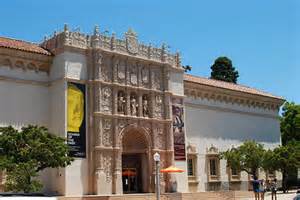Nov 5 2016 - Jan 31 2017
San Diego, CA
Louis Kahn: The Power of Architecture is the first retrospective of Louis Kahn's work in two decades, presenting over 200 objects related to Kahn's selected buildings and projects in the form of architectural models, plans, original drawings, photographs, films and more. With complex spatial compositions and a mastery of light, Louis Kahn's architecture is regarded as a touchstone of 20th century modernism. Dignified, beautiful, and imbued with a powerful universal symbolism, Kahn's designs remain a testament to his belief that architecture should be monumental and spiritually inspiring. Among his most famous works are the Salk Institute in La Jolla, CA; the Kimbell Art Museum in Forth Worth, TX; and the National Assembly Building in Dhaka, Bangladesh.
At The San Diego Museum of Art, Louis Kahn: The Power of Architecture will be accompanied by Shape, Shadow, Space, an exhibition of architectural photography from students of the Woodbury University School of Architecture. The Museum will also present a symposium on Saturday, November 5, 2016, featuring Ariel Plotek, Associate Curator of Modern Art and Contemporary, The San Diego Museum of Art; Wendy Lesser, editor of The Threepenny Review and author of the forthcoming biography, You Say to Brick: The Life of Louis Kahn (due in spring 2017); William Whitaker, Curator and Collections Manager, Architectural Archives of the University of Pennsylvania School of Design; and Sara Lardinois, Project Specialist, The Getty Conservation Institute. The Museum will also screen the film My Architect, A Son’s Journey, presented by the director and Kahn’s son, Nathaniel Kahn on January 13.
Credit: Exhibition overview from museum website
Whether you go or not, Louis Kahn: The Power of Architecture, is the first comprehensive publication on this architect in 20 years, and presents all of his important projects. Essays by prominent Kahn experts discuss the sources, contexts and influences of his work; among the authors are such renowned art and architectural historians as Stanislaus von Moos, William J. R. Curtis, Eeva-Liisa Pelkonen and Neil Levine. Topics discussed include Kahn’s pioneering role in concrete construction; the visionary plans for his home city of Philadelphia; his years at Yale University; his dialogue with Josef Albers; and his importance for modern architecture in Southeast Asia. An illustrated biography provides new facts and insights about Kahn’s life and work. In interviews, leading architects such as Frank Gehry, Renzo Piano, Peter Zumthor and Sou Fujimoto explain Kahn’s significance in today’s architectural discourse. An extensive catalogue of works features original drawings and architectural models from the Kahn archive, many of which are presented with high-quality images for the first time. The book is further augmented by a portfolio of Kahn’s travel drawings as well as photographs by Thomas Florschuetz, which offer completely new views of the Salk Institute and the Indian Institute of Management.
Born in Estonia, Louis Kahn (1901–1974) emigrated to the U.S. with his family in 1906. After studying at the University of Pennsylvania, and working for several architecture firms in Philadelphia, Kahn founded his own atelier in 1935. From 1947 to 1957, Kahn served as a design critic and professor at the Yale School of Architecture, and later as professor of architecture at the School of Design at the University of Pennsylvania.
Exhibition Venues & Dates
Nov 5 2016 - Jan 31 2017
San Diego, CA

